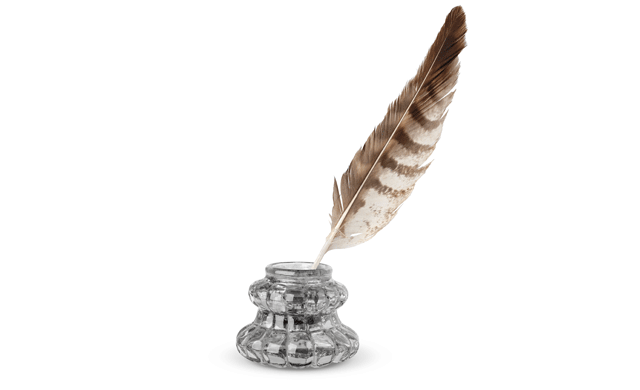Between 1 October and 3 November 2016, Darlington Civic Theatre mounted an exhibition in Crown Street library entitled 'Dickens in Darlington'. In this, the first post in a series, we publish the content of the exhibition online.
Dear, dear, what a place it looked, that Astley’s, with all the paint and gilding and looking-glass; the vague smells of horses suggestive of coming wonders; the curtain that hid such gorgeous mysteries; the clean white sawdust down in the circus, the company coming in and taking their places; the fiddlers looking carelessly up at them while they tuned their instruments, as if they didn’t want the play to begin, and knew it all beforehand! What a glow was that, which burst upon them all, when the music began in good earnest, with strong parts for the drums, and sweet effects for the triangles!
Description of Astley’s Amphitheatre, Lambeth, London, in The Old Curiosity Shop, serialised 1840-1841
OVERTURE
Despite the hardships he endured as a child - frequently moving house, a disrupted education, and being sent to work in a boot-blacking factory at the age of 12 – Charles Dickens was lucky enough to be introduced to the theatre by his family at an early age. Both his father and his aunt Fanny shared with him their love of theatre, and a young Charles was taken to the Theatre Royal, Rochester, to see variety shows, pantomime and Shakespeare. And in 1819 and 20 when Charles was seven and eight, he travelled to London to see the great clown, Grimaldi.
When, aged 15, Dickens began work as a solicitor’s clerk and later as a shorthand reporter at Doctors’ Commons – a base for lawyers practising civil law, of which a satire can be found both in Dickens’ Sketches by Boz and in his David Copperfield - he claimed to attend the theatre every night for three years, carefully studying the bills and going wherever there was the best acting.
THEATRE IN DICKENS’ LONDON
Just as it is today, London in Dickens’ time was full of theatres: minor theatres, melodrama houses and ‘legitimate’ theatres, which were licensed by the Lord Chamberlain to perform straight drama including the works of Shakespeare. The unlicensed theatres, in contrast, put on a mixture of music, dance, pantomime, pageantry, acrobatics and animal performances, until in 1843 Parliament changed the licensing laws to permit all theatres to stage straight plays if their owners and managers desired. In fact, music hall, and its successor, variety, remained popular until the first decades of the 20th century.
Typically, doors opened for an evening at the theatre at 6.30pm and often went on until midnight or beyond, with half price admission from 8.45pm. In the 1860s advances in artificial lighting made possible a later start time. Even in legitimate theatre, actors had to be multi-skilled at acting, acrobatics and playing a variety of musical instruments. Some actors also specialised in character roles which could easily be adapted to similar roles in the repertoire of stock companies.
THEATRE'S LOSS, LITERATURE'S GAIN
In 1832, when he was 19 or 20, Dickens asked Robert Keeley, a popular comedian, to coach him for a possible career as an actor. His sister Fanny, who was training as a classical musician at the Royal Academy, also helped him rehearse, accompanying his songs on the piano. Once he felt ready he wrote for an audition to George Bartley, a comic actor who was the stage manager at Covent Garden Theatre. On the day of the audition, however, Dickens succumbed to one of the heavy colds he was plagued by, and was forced to cancel. He never tried again. This turned out to be to the benefit of generations of readers.
Although he gave up his dreams of becoming an actor he never lost his love of theatre and devoted much of his considerable energy to amateur theatricals and dramatic public readings. And of course theatre found its way into his novels, for example in The Old Curiosity Shop, where its gilded splendour is evocatively depicted, and in Nicholas Nickleby where the protagonist joins an acting company led by Vincent Crummles, based on a real-life theatrical manager called TD Davenport. Nicholas, and his friend Smike, take to the boards, with Smike tentatively tackling the role of the apothecary to Nicholas’s own Romeo. Nicholas, however, soon renounces the stage to make his living as a writer, albeit of accounts in a warehouse: it is tempting for a reader to relate this back to the author’s life.
A GIFTED AMATEUR
The year after his missed audition, at his family’s lodgings at 18 Bentinck Street, Dickens set about putting on performances with himself as actor, singer, writer, stage manager, set designer and builder, and accordionist. His friends helped to paint the scenery, and rehearsals took place on Wednesdays for weeks on end. As was the custom there were three pieces performed: Clari, or The Maid of Milan, The Married Bachelor and Amateurs and Actors.
In 1845, by which time he had achieved considerable success as a writer, Dickens progressed to putting on the work of playwright Ben Jonson, mounting Every Man in his Humour with the help of his friend John Forster, his brothers Fred and Augustus, his publisher Frederick Evans, various Punch contributors and a professional actress, Julia Fortescue. A retired actress, Miss Fanny Kelly, let them use her little theatre and there was a full house for performances on 20 September with Alfred, Lord Tennyson and the Duke of Devonshire in the audience. Two more performances were put on in November, with all proceeds going to charity.
Dickens continued to mount regular theatrical performances for the next 12 years, and he was acclaimed for his acting. In 1851 he gave a Royal Command Performance of Not So Bad as We Seem at the home of the Duke of Devonshire. Queen Victoria, who made up part of the exclusive audience, described the play as ‘full of cleverness, though rather too long’ and found Dickens’ acting ‘admirable’.
WILKIE COLLINS, NELLY TERNAN AND THE FROZEN DEEP
It was a production, with his friend, Wilkie Collins, of The Frozen Deep which in 1857 was to change the course of Dickens’ life. A collaboration between the two writers, The Frozen Deep was planned at Tavistock House for Charles’ son Charley’s 20th birthday in January 1857. Dickens took the leading role, growing his beard especially for it. His performance as the tragic hero, Richard Wardour, was widely praised and he went on to base the character of Sidney Carton in A Tale of Two Cities on Wardour.
His life took a dramatic turn when he was persuaded to stage the play professionally at Manchester’s Free Trade Hall in order to raise money for the widow of an old friend, Douglas Jerrold. The venue seated 4,000 people and it became clear that Dickens would need to engage professional actresses for the female roles. He employed Mrs Frances Ternan and two of her daughters, Maria and the 18-year-old Ellen. Dickens, who was 45, became very close to Ellen, known as Nelly, and rumours about their relationship were rife. Shortly afterwards he separated from his wife Catherine, with whom he had become increasingly disenchanted, causing widespread scandal and dividing public opinion. His relationship with Nelly continued until his death in 1870 and he caused yet more controversy by leaving her £1,000 in his will.
DICKENS' STORIES ON-STAGE
Although Dickens had a deep love of the theatre, playwrights were not held in high esteem, as theatre in general was not regarded as a respectable profession. They were also badly remunerated, so while he made some early forays into the genre with plays such as The Strange Gentlemen, The Village Coquettes and Is She His Wife? and could have been an accomplished playwright, Dickens chose to continue making his living as a highly-paid novelist, albeit one whose characters were larger-than-life and who gave dramatic readings of his own work. Nevertheless, theatres enthusiastically dramatised his work as soon as each monthly instalment was published. The author made a special arrangement for his Christmas books so they could simultaneously appear in print and be adapted for the stage of the Adelphi or Lyceum theatres. He himself worked with the dramaturges and the companies in rehearsal.
But sometimes, Dickens’ work was dramatised without his consent, and he was far from happy if an adaptation completed the story for the stage before he had even published the final instalment.
CURTAIN DOWN
In the final months of his life Dickens told a friend that his most cherished dream was:
to settle down now for the rest of my life within easy reach of a great theatre, in the direction of which I should hold supreme authority. It should be a house, of course, having a skilled and noble company, and one in every way magnificently appointed. The pieces acted should be dealt with according to my pleasure, and touched up here and there in obedience to my own judgment; the players as well as the plays being absolutely under my command. There, that’s my daydream!

